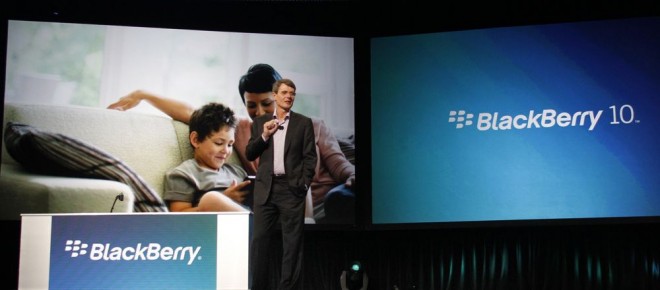BlackBerry 10 shows RIM may have finally gotten ‘the message’
But it’s not enough to win over the skeptics
Share

With Research In Motion Ltd.’s future looking increasingly dire, CEO Thorsten Heins stepped on a stage in Orlando, Fla., today and began the long and difficult process of trying to rebuild consumers’ faith in the beleaguered BlackBerry smartphone platform. It was Heins’ first keynote presentation at the annual BlackBerry World gathering and he used it to offer a sneak peak of the BlackBerry 10 software that will run RIM’s next generation of devices, which, after several delays, are set to be launched later this year.
Heins, who took over from co-CEOs Jim Balsillie and Mike Lazaridis in January amid a management shake-up, used a prototype phone to demonstrate a few nifty features of RIM’s new BlackBerry software. He reiterated that RIM’s focus is on making the BlackBerry a bulletproof communications tool—an attempt to differentiate RIM from industry leaders Apple and Google.
That includes a new virtual keyboard that can learn a users’ typing habits and prevent typos on the fly by adjusting the position of certain keys. There’s also a feature that spells out words over individual keys as they’re being typed, giving users the option of flicking them onto the screen with their fingers. Heins also showed off improvements to the BlackBerry’s multimedia functions, including a feature that allows users to “rewind” photographs so they can capture the moment they were intending to (i.e. before somebody blinked).
It wasn’t nearly enough to win over skeptics. “The parts of BlackBerry 10 demoed are slick,” wrote Jonathan Geller on the popular tech blog Boy Genius Report. “What we saw wasn’t truly innovative, though. It wasn’t compelling enough, and it’s unfortunately too late to try and gain enough traction and support for a third mobile ecosystem.”
With some analysts predicting that RIM’s global market share could slip below five per cent (it now stands at 8.8 per cent, compared to 24 per cent for Apple and 51 per cent for Android, according to Gartner Research), many observers share Geller’s belief that the only way for RIM to recover is if BlackBerry 10 is a runaway success story.
But coming up with another smartphone breakthrough, like the one Apple achieved in 2007 with the original iPhone, is no longer a realistic goal for RIM in such a competitive market. The best RIM can hope for is hanging on to its 77 million subscribers, and maybe pick up a few new ones.
The key will be getting the small things right, an area where RIM has struggled and Apple has excelled. That includes making a virtual keyboard that actually works, a user interface that’s intuitive and software that adds—not detracts—from the overall BlackBerry experience.
It’s going to be an uphill battle. But if the early looks at BlackBerry 10 are any indication, RIM appears to finally have gotten the message. With RIM’s shares down more than 70 per cent over the past year to $13.72, investors can only hope it didn’t arrive too late.